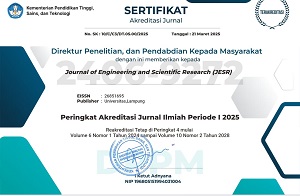Modeling Stock Return Data using Asymmetric Volatility Models: A Performance Comparison based on the Akaike Information Criterion and Schwarz Criterion
DOI:
https://doi.org/10.23960/jesr.v1i1.8 - Abstract View: 311Keywords:
Volatility, GARCH, TGARCH, EGARCH, APARCH, AIC and SC.Abstract
The Generalized Autoregressive Conditional Heteroskedasticity (GARCH) model has been widely used in time series forecasting especially with asymmetric volatility data. As the generalization of autoregressive conditional heteroskedasticity model, GARCH is known to be more flexible to lag structures. Some enhancements of GARCH models were introduced in literatures, among them
are Exponential GARCH (EGARCH), Threshold GARCH (TGARCH) and Asymmetric Power GARCH (APGARCH) models. This paper aims to compare the performance of the three enhancements of the asymmetric volatility models by means of applying the three models to estimate real daily stock return volatility data. The presence of leverage effects in empirical series is investigated. Based on the value of Akaike information and Schwarz criterions, the result showed that the best forecasting model for our daily stock return data is the APARCH model
Downloads







